What is I LOVE That Scene? It is a regular feature on our website in which we detail one single film scene we adore. Typically, the scenes we discuss are those that force us to involuntarily exclaim “I LOVE That Scene!” when they are brought up in conversation, thus the name. It is our intention to turn readers onto films through exposure to single scenes. Spoilers will be clearly indicated.
THE FILM: Planes, Trains, and Automobiles (1987)
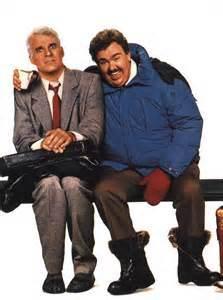
THE PLOT: John Hughes will always be known as the man behind “Brat Pack” films like The Breakfast Club, Sixteen Candles, and Ferris Bueller’s Day Off. His films have their detractors, but one thing he did that warrants praise was his ability to create teenage characters that, while teenage archetypes, were grounded in reality. He never condescended to his teenage viewers or treated them with contempt. He clearly had affection for his protagonists and examined teenage conflict in a serious, unironic manner. Teenagers can still watch and relate to his films today. Could the same be said for She’s All That?
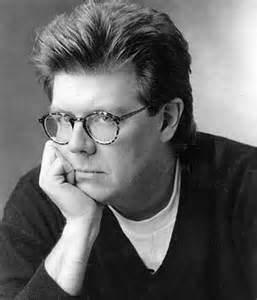
Voice of a generation…Well, not his generation.
However, his best film may in fact be 1987′s Planes, Trains, and Automobiles. Starring Steve Martin and John Candy, in his best performance, the film’s setup appears from the outside to be cliche-riddled. A man, desperate to get home for Thanksgiving (Martin), finds himself saddled with an obnoxious, annoying travel companion (Candy) who attaches himself to Martin and makes his quest home a conflict-riddled nightmare. Along the way, every attempt they make to get home, such as by plane, train, or automobile (see what I did there? Yeah, I’m that subtle) is thwarted. As the journey continues, Martin’s character begins to feel affection and empathy towards Candy’s good-natured, eager to please presence. It’s not that the outcome is unpredictable, but the way in which the resolution comes about is sharply observed and well-executed by its perfectly cast leads.
- (SPOILERS BELOW. READ AT YOUR OWN RISK. YOU HAVE BEEN WARNED.)
THE CONTEXT OF THE SCENE: Martin’s animosity towards Candy sprang from their first scene together, in which Candy unknowingly takes Martin’s cab. They then find themsleves sitting together on a delayed, then cancelled, flight. Eventually, the flight reroutes to Wichita, KS. Martin is unable to get a hotel room and is forced to room with Candy.

The film’s version of a Wichitan. Can’t you feel my pride swelling for the town I call “home.”
When they open their hotel room door, an entirely new Hell awaits them: sharing a bed. As the evening wears on, Candy’s actions continue to erode Martin’s patience- he uses all of the bathroom towels, he leaves beer on a vibrating bed that explodes and soaks Martin’s bedside, he cracks his knuckles and clears his sinuses in the loudest fashions possible. Finally, Martin reaches his breaking point, unloading a tirade of repressed rage onto Candy:
-
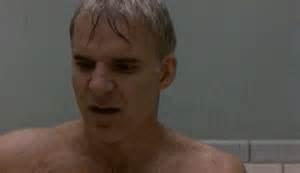
“Still, this is better than being in the Pink Panther.”
THE SCENE:
WHY I LOVE IT: First of all, Martin’s dialog is sharp and incredibly funny, and his delivery is flawless. We understand what has led him to this breaking point. Hughes could have played the scene for simple comedy, and it would have worked. However, what really gives the scee its power is the fact that Hughes chooses to intercut Martin’s meltdown with shots of John Candy’s face. He is crushed, and his face continues to fall throughout the scene.

Is your soul crushed? Because his is.
He’s probably a man who has been told versions of this several times throughout his life, but his genial good nature prevents him from remaining closed off from those he encounters. Martin begins the scene with our sympathy, but by the end of the scene, Candy has our empathy.
Candy’s comedic persona often revolved around his inherent likability, but his film roles rarely needed him to be a pitifully sad, lonely, sympathetic figure. Hughes recognized how strong he could be in a role like this, and used him to brilliant effect. Martin’s comedic roles during this era of his career cashed in on a tone of repressed, threatening to explode at any second rage (and usually did in hilarious fashion), coupled with a quality that made us willing to root for him even in unlikable circumstances.
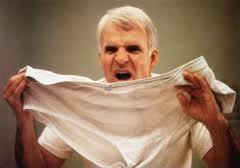
Yep, he’s a ticking time bomb.
The two have brilliant chemistry and the movie could have probably coasted on the comedic stylings of two likable leads and been nothing more (for evidence of such an attempt, see Due Date, which tries to emulate this film and fails miserably). However, from this scene forward, Hughes makes his film more effective and involving. This scene shows the viewer that Candy will not function as a mere source of constant irritation, but as a likable, kind-hearted individual. Through his time with Candy, Martin’s rigid approach to life falls away, and he finds himself able to recognize what Candy has been trying to tell him since their partnership began: Candy needs someone to show him some kindness, and he want that person to be Martin.
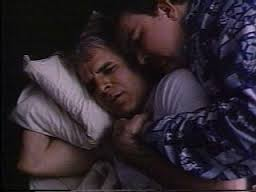
See? They made up.
Planes, Trains, and Automobiles is widely available for purchase or rental, with the most immediate option being Netflix Instant Streaming. If you have not seen it, please consider rectifying this situation.
Do you have a favorite scene from Planes, Trains, and Automobiles, similar or different than the one I highlighted? Let us know in the comments.


